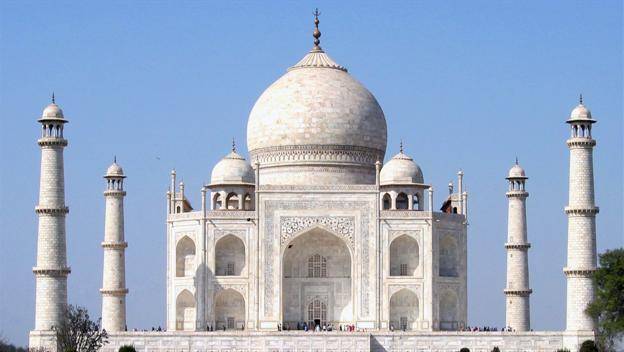NEW DELHI: Over the centuries, the Taj Mahal has endured its share of attacks — plundered by the Jats of northern India and looted by British soldiers, among other indignities. In recent years, officials have worried that growing air pollution could permanently darken the tomb’s brilliant white exterior.
But few people anticipated the latest affront — millions of mosquito-like insects, their numbers supercharged by nutritious algae blooming profusely along the banks of the polluted Yamuna River nearby. Like generations of romance-driven human couples before them, the bugs have swarmed the Taj Mahal on a mating flight, excreting a green substance on parts of its marble walls, a report in the New York Times said.
The Yamuna has suffered mightily in recent years from the dumping of solid waste in its waters, said an environmental activist in Agra, India, the site of the Taj Mahal.
“I have been constantly watching how the river pollution has gone from bad to worse,” said D.K. Joshi, who filed a petition over the insects in the National Green Tribunal, an environmental court last week. “The encroachments on and around the riverbed, the sewage going directly into the river” are choking it, he said.
On Monday, the National Green Tribunal issued notices to the central and local authorities, including the Ministry of Environment and Forests, telling them to respond to the petition this month.
With India’s cities ranking among the most polluted in the world by the World Health Organization, public concern over toxic air and water is mounting. The central government has pledged billions of rupees to cleaning the Ganges River. But the effect of pollution on India’s cultural heritage, though less obvious than its health effects, is also worthy of attention, experts say.
Sohail Hashmi, a Delhi-based writer and expert on heritage monuments, told Press Trust of India in an interview that the recently revived white limestone doors of the historic Red Fort, a former residence the Mughal emperor that was completed in 1648, “have become yellow in about six years.” Like the Red Fort, the Taj Mahal was built on the orders of Shah Jahan, a Mughal emperor, as a mausoleum for his beloved wife, and it was also finished in 1648.
Puneet Dan, a tour guide in Agra, said he noticed the discoloration on the boundary wall of the Taj Mahal and on the back of the monument. So did his tourists, who he said flew into “semipanic mode.”






